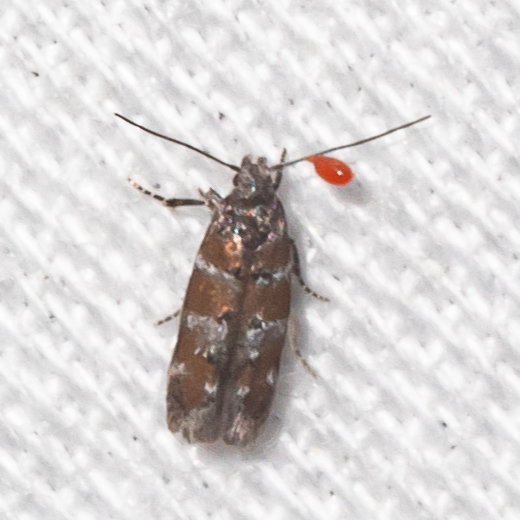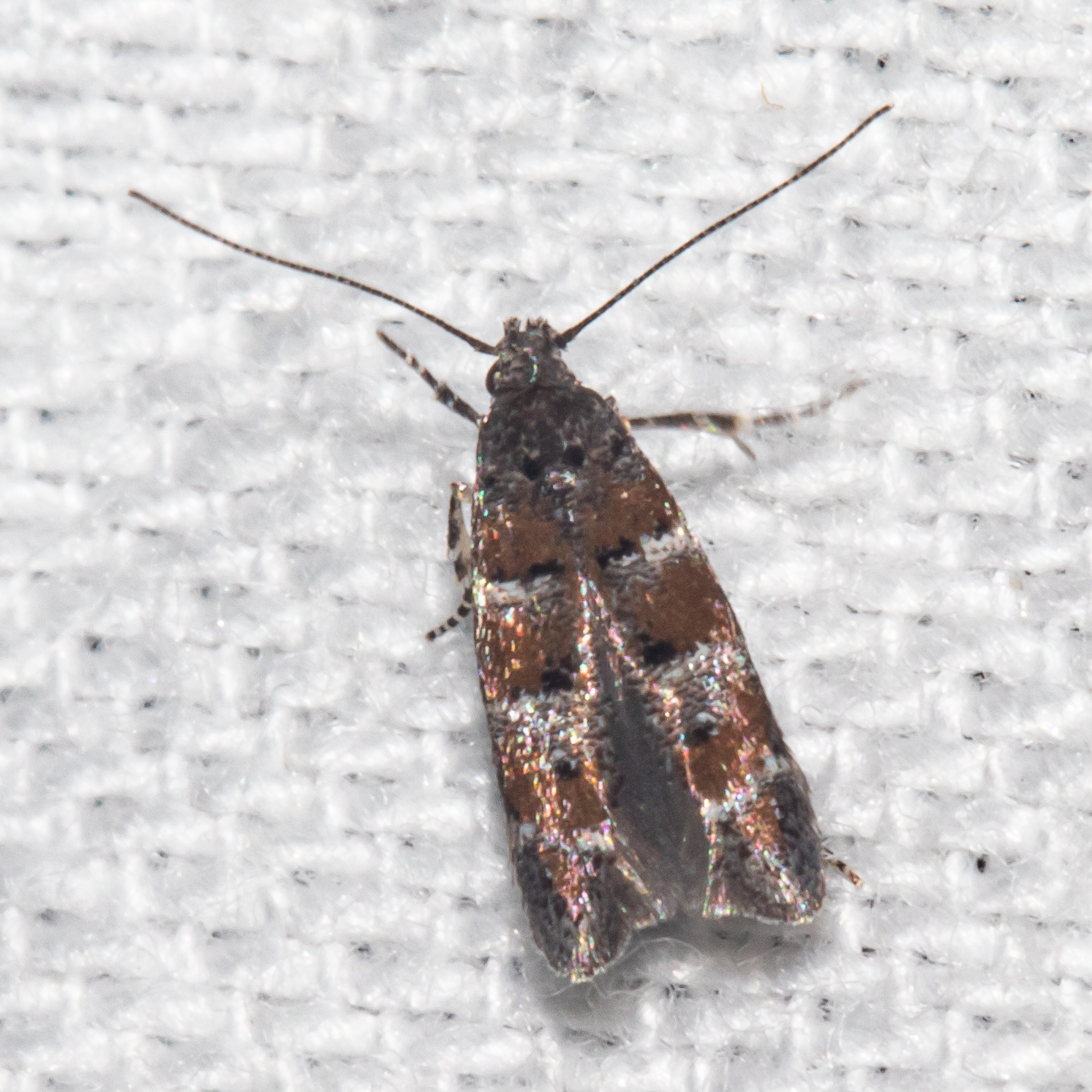Map Snapshot



10 Records
Status
This possible undescribed species has a gray vertex and top of thorax. Specimens are curated in the USNM collection (as of 2019) as "Exoteleia sp.", separate from the similar Pine Needleminer Moth, which has a white vertex and top of thorax as curated. Hodges (1985) reviewed the eastern Exoteleia species, noted evidence of what may be several undescribed species, and discussed the difficulties in defining the species limits. Adamski et al. (2010) showed four DNA clusters related to E. pinifoliella but could not conclude how many species may be represented, choosing instead to refer to the group as the pinifoliella complex. Both white-vertex and gray-vertex forms are confirmed in Maryland flying from May to August.
Relationships
Larval host plants are likely pines, the caterpillars mining the needles.

